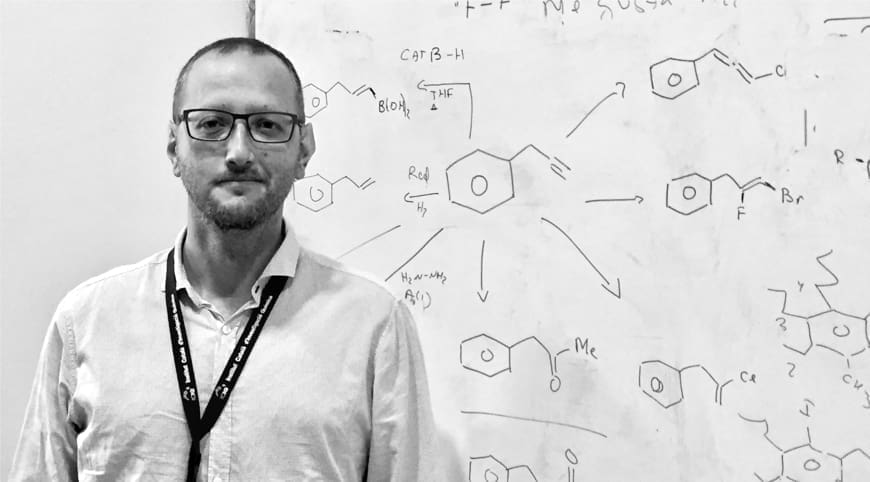The Coming of Age in Iodane-Guided ortho-C-H Propargylation: From Insight to Synthetic Potential
As early as 1991 Ochiai et al. reported that an acid‐activated form of phenyliodine diacetate, PhI(OAc)2, undergoes a reaction with propargyl‐silanes, germanes and stannanes to give the ortho‐propargyl iodobenzene. This formal C−H alkylation was proposed to take place through an unusual (even to date) iodonio‐based [3,3] rearrangement of an intermediate allenylsilane. Although this mechanistic principle has been invoked in related iodane‐directed C−H coupling reaction, some underlying principles have remained unaddressed, and the reaction rarely employed. Herein, DFT evidence for a mechanism best described as iodine‐guided electrophilic aromatic substitution is presented. Using a newly optimized reaction protocol that significantly reduces the undesired reduction process, the potency of the method is showcased through the synthesis of >40 structurally diverse ortho‐iodo propargyl (or allenyl) arenes.

S. Izquierdo, S. Bouvet, Y. Wu, S. Molina, A. Shafir
Chem. Eur. J 2018, 24, (58), 15517-15521
DOI:
10.1002/chem.201804058

Let's create a brighter future
Join our team to work with renowned researchers, tackle groundbreaking
projects and contribute to meaningful scientific advancements



















